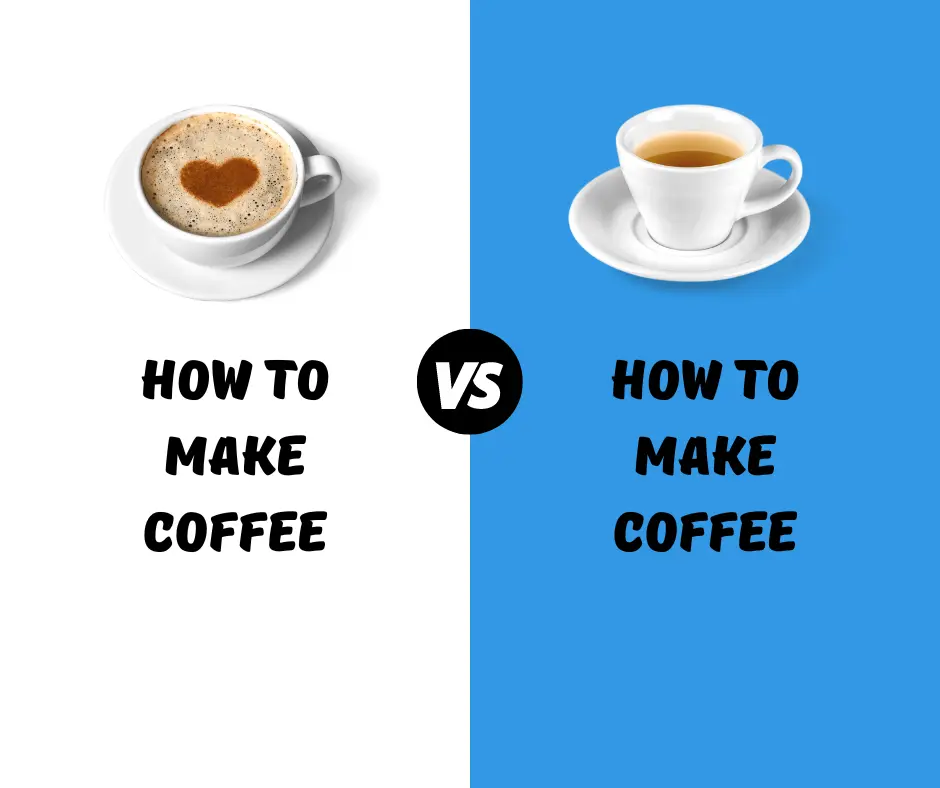What is A/B testing in Digital Marketing
A/B testing, or split testing, is a fundamental technique in digital marketing used to compare two versions of a webpage, email, advertisement, products, or other digital content to determine which performs better. This method involves splitting the audience into two groups: one that views version A (control) and another that views version B (variation). By analyzing how each version performs against specific metrics, marketers can make data-driven decisions to optimize their campaigns and improve overall performance.

A/B-Split Testing Example
How is A/B Testing applied in Digital Marketing
Table of Contents
A/B testing can be applied across various facets of digital marketing, including website design, email campaigns, social media ads, landing pages, and more.
Here’s how it works in some key areas:
Website Design
Marketers can test different elements of a website such as headlines, images, call-to-action buttons, and page layouts. For instance, if you’re running an e-commerce site, you might want to see if changing the color of the “Buy Now” button from green to red increases click-through rates and conversions, or if a certain image, copy, etc. persuades an audience to take action.
Email Campaigns
In email marketing, A/B testing can help determine which subject lines, content, or designs are more effective. For example, sending two variations of an email to a sample of your list—one with a personalized subject line and another with a generic one—can show which approach garners higher open and click-through rates. Also, the type of body content and CTA’s they reply to.
Social Media Ads
Social media platforms like Facebook, Instagram, and Twitter offer built-in tools for A/B testing ads. Marketers can test different visuals, copy, targeting options, and calls to action to see which combinations yield the best engagement and conversion rates.
Landing Pages
Testing different versions of landing pages is crucial for optimizing conversion rates. Changes might include varying the headline, altering the layout, or experimenting with different form fields to see which configuration leads to more sign-ups or purchases
Types of Metrics to Observe in Social Media Split Testing
When conducting A/B tests on social media, several key metrics should be monitored to determine the success of the tests and these include;
- Engagement Rate
It includes likes, shares, comments, and overall interactions. Higher engagement rates typically indicate that the content resonates well with the audience.
- Click-Through Rate (CTR)
The CTR measures how many people clicked on the link within your ad or post. This metric is crucial for understanding how compelling your content is and how well your call to action is performing.
- Conversion Rate
This is the percentage of users who completed a desired action, such as making a purchase or filling out a form, after clicking on your social media ad. Conversion rate directly indicates how effective your ad is at driving users to take specific actions.
- Cost Per Click (CPC)
CPC helps marketers understand the cost-effectiveness of their campaigns. A lower CPC often indicates that the ad is performing well in attracting clicks at a lower cost.
- Bounce Rate
For ads leading to landing pages, the bounce rate indicates the percentage of visitors who leave the page without taking any action. A high bounce rate might suggest that the landing page content or design needs improvement.
Benefits of Split Testing in Content Marketing
Implementing A/B testing in content marketing can yield numerous benefits and results in your marketing strategy. These include;
- Data-Driven Decisions
A/B testing allows marketers to rely on hard data rather than intuition when making decisions. This leads to more effective and targeted content strategies.
- Increased Conversion Rates
By identifying and implementing the most effective variations of your content, A/B testing can significantly improve conversion rates, whether it’s for lead generation, sales, or other desired actions.
- Improved User Experience
Testing different content variations helps marketers understand what resonates best with their audience, leading to a more engaging and satisfying user experience.
- Reduced Risk
A/B testing minimizes the risk of making major changes to your content or strategy by allowing you to test small variations first and scaling up successful changes.
- Enhanced ROI
Optimizing content through A/B testing often leads to better performance, which means higher returns on investment (ROI) for marketing campaigns.
Success Rates of A/B Testing in Digital Marketing
The success rates of A/B testing in digital marketing can vary widely depending on the industry, the specific elements being tested, and how well the tests are designed and executed.
However, numerous case studies and industry reports highlight the effectiveness of A/B testing:
- E-commerce
Many e-commerce companies report significant increases in conversion rates through A/B testing. For example, changing the layout of product pages, optimizing checkout processes, and refining call-to-action buttons have led to conversion rate improvements of 20% or more in some cases.
- Email Marketing
A/B testing has been shown to improve email open rates and click-through rates significantly. Marketers who test different subject lines, send times, and content formats often see improvements of 10-30% in engagement metrics.
- Social Media Advertising
In social media advertising, A/B testing helps in identifying the most effective ad creatives and targeting strategies. Successful tests can result in reduced CPC and increased CTR, with some campaigns seeing up to a 50% improvement in performance.
- Landing Pages
Optimizing landing pages through A/B testing often leads to substantial gains. Companies have reported increases in conversion rates of 20-50% by testing and implementing changes to headlines, images, and form fields.
What We Say
A/B testing is a powerful tool in the digital marketer’s arsenal, enabling data-driven decisions that enhance performance and maximize ROI. By strategically testing and refining different digital content elements, marketers can understand what truly resonates with their audience, leading to higher engagement, better user experiences, and ultimately, more successful marketing campaigns.
Whether applied to website design, email marketing, social media ads, or landing pages, A/B testing is essential for any organization/business/brand looking to optimize their digital marketing campaigns.




